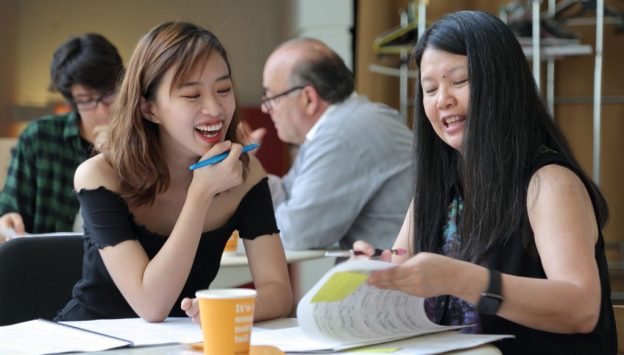Open Readings: Thurs. June 21 at 10:30am / Fri. June 22 at 7:30pm
Career Development Seminar: Fri. June 22 10:00am – 3:00pm
Frederick Loewe Theater – New York University
35 West 4th Street
New York, NY 10012
Get your tickets:
- Open Rehearsal (June 21 at 10:30 a.m.) – FREE
- Career Development Workshop (June 22 at 10:00 a.m.) – $10
- Run-through Performance (June 22 at 7:30 p.m.) – $10
ACO will hold its 27th Annual Underwood New Music Readings for emerging composers on Thursday and Friday, June 21 and 22, 2018. Six composers have been selected by open call to participate including Carlos Bandera, Lily Chen, Scott Lee, Ryan Lindveit, Tomas Peire Serrate, and Liliya Ugay. Each composer will hear ACO perform their work live for the first time, receive personalized mentorship, and an archival recording. Two composers will receive a commission for a work to be performed by ACO in an upcoming season: one will be selected by the panel of mentor composers and one will be selected as the Audience Favorite through an audience survey.
The Readings are open to the public for a nominal admission price. The first day of Readings, a working rehearsal, will be presented on Thursday, June 21 at 10:30am; the second day of Readings will take place on Friday, June 22 at 7:30pm, during which all selected pieces will be polished and performed in their entirety, led by ACO’s Music Director George Manahan. ACO’s Artistic Director Derek Bermel directs the readings. Composers looking to build their entrepreneurial skills are invited to attend the Career Development Seminar on Friday, June 22 from 10:00am – 3:00pm.
ABOUT THE PARTICIPANTS
About Carlos Bandera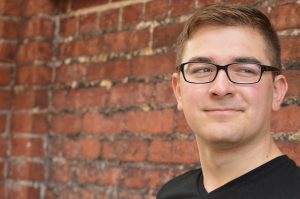 Carlos Bandera is a composer who is fascinated by musical architecture and by the music of the past. His recent music explores these fascinations, often by placing a musical quotation, be it a phrase, scale, or sonority, within dense microtonal textures.
Carlos Bandera is a composer who is fascinated by musical architecture and by the music of the past. His recent music explores these fascinations, often by placing a musical quotation, be it a phrase, scale, or sonority, within dense microtonal textures.
Carlos’s music has been performed in the Faroe Islands, Scotland, Uzbekistan, China, and several spaces in the US, including Stern Auditorium, Carnegie Hall. In 2016, he organized and participated in a workshop between Peabody composers and the Uzbekistan-based contemporary music ensemble, Omnibus Ensemble. In the summer of 2015, Carlos attended the Fresh Inc Music Festival, where he worked with the Fifth-House Ensemble and studied composition with Dan Visconti. He also attended the 2015 Wintergreen Summer Music Academy. There he studied with Daron Hagen and Gylda Lyons and had his Florestan premiered by members of the Wintergreen Festival Orchestra.
In 2015 Carlos earned his Bachelor of Music degree in Music Theory and Composition from the John J. Cali School of Music at Montclair State University, where he studied with Elizabeth Brown, Dean Drummond, and Marcos Balter. Carlos recently received his Master of Music degree in Composition from The Peabody Institute of the Johns Hopkins University, where he participated in masterclasses with Christopher Rouse and Georg Friedrich Haas and studied privately with Kevin Puts.
Photo courtesy Carlos Bandera.
Work to be Read: Lux in Tenebris
Upon first hearing the music of Anton Bruckner, I felt deeply connected to the composer and his work. His Eighth Symphony in particular, with its immense harmonic landscapes, devastating silences, and profound “darkness-to-light” narrative, continues to be one of my greatest influences – no doubt, in more ways than I am even aware of. Lux in Tenebris explores these elements of the Eighth Symphony by allowing Brucknerian light to pierce through a dense micropolyphonic fabric.
The work is constructed in three large sections: the first features the main theme of the first movement of Bruckner’s Eighth Symphony, the second focuses on harmonies that are built from the pitches of that theme, and the third section features a fragmented quotation of the last iteration of the theme (found in the coda of that same movement), which Bruckner described as “how it is when one is on his deathbed, and opposite hangs a clock, which, while his life comes to an end, beats on ever steadily: tick, tock, tick, tock.”
While Lux in Tenebris features quotations from only the first movement of the Eighth, it also features the C-major sonority from the coda of the Finale, which represents light in Bruckner’s darkness-to-light narrative. The title Lux in Tenebris is an allusion to this narrative and comes from “et lux in tenebris lucet et tenebrae eam non conprehenderunt” (John 1:5), meaning “and the light shines in the darkness, and the darkness did not comprehend it.”
Carlos’ Sound: Lux in Tenebris (Peabody Symphony Orchestra, Jisoo Kim conductor)
About Lily Chen
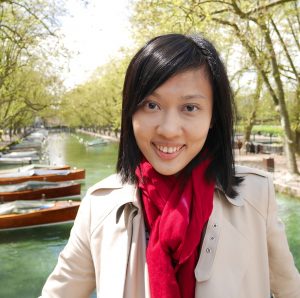 Lily Chen (b. 1985), born in Taiwan, is a composer exploring timbral materials with subtle theatrical potentials in both acoustic and electronic music, which shape evocative atmospheres that point towards poetic commentary on her observations on literary, emotional, or social aspects of the contemporary condition. In December 2017, she received her Ph.D. in music composition from the University of California at Berkeley, where she studied with Ken Ueno, Franck Bedrossian, Edmund Campion, and Cindy Cox. She also holds M.M. (2009) and B.F.A. (2007) from Taipei National University of the Arts in Taiwan, under the instruction of Chung-Kun Hung. Since 2005, Lily has received several prizes, including the George Ladd Prix de Paris for one research year in Paris, 1st Prize of Asian Composers League Young Composers Award, 2nd Prize of National Taiwan Orchestra Symphony Competition, winner of !BAMM! Student Composers Competition, 1st and 2nd Prizes of Nicola de Lorenzo Prize in Music Composition. Her music has also been performed at several international festivals in United States and Asia, including June in Buffalo, Mise-en Festival, International Computer Music Conference, SEAMUS, New York City Electroacoustic Music Festival, and Asian Composers League Conference and Festival. Lily has also collaborated with several ensembles and orchestras, such as St. Louis Symphony Orchestra, Eco Ensemble, Ensemble Signal, Mivos Quartet, Splinter Reeds, Ensemble Pamplemousse, Ensemble Mise-en, Ensemble Exceptet, Ensemble Cairn, National Taiwan Symphony Orchestra, and Little Giant Chinese Chamber Orchestra. For more information, please visit – http://chenlily.com
Lily Chen (b. 1985), born in Taiwan, is a composer exploring timbral materials with subtle theatrical potentials in both acoustic and electronic music, which shape evocative atmospheres that point towards poetic commentary on her observations on literary, emotional, or social aspects of the contemporary condition. In December 2017, she received her Ph.D. in music composition from the University of California at Berkeley, where she studied with Ken Ueno, Franck Bedrossian, Edmund Campion, and Cindy Cox. She also holds M.M. (2009) and B.F.A. (2007) from Taipei National University of the Arts in Taiwan, under the instruction of Chung-Kun Hung. Since 2005, Lily has received several prizes, including the George Ladd Prix de Paris for one research year in Paris, 1st Prize of Asian Composers League Young Composers Award, 2nd Prize of National Taiwan Orchestra Symphony Competition, winner of !BAMM! Student Composers Competition, 1st and 2nd Prizes of Nicola de Lorenzo Prize in Music Composition. Her music has also been performed at several international festivals in United States and Asia, including June in Buffalo, Mise-en Festival, International Computer Music Conference, SEAMUS, New York City Electroacoustic Music Festival, and Asian Composers League Conference and Festival. Lily has also collaborated with several ensembles and orchestras, such as St. Louis Symphony Orchestra, Eco Ensemble, Ensemble Signal, Mivos Quartet, Splinter Reeds, Ensemble Pamplemousse, Ensemble Mise-en, Ensemble Exceptet, Ensemble Cairn, National Taiwan Symphony Orchestra, and Little Giant Chinese Chamber Orchestra. For more information, please visit – http://chenlily.comPhoto by Lily Chen.
Work to be Read: A Leaf Falls After
A Leaf Falls After is inspired by my recent memories of living in Europe. In the fall of 2015, I received the Ladd Prize funded by UC Berkeley and had the great opportunity to live in Paris for ten months. This was my first time in Paris as well as in Europe; I experienced intimate incidents of fragile beauty that touched me, but also shocking and terrifying ones during my residence there. I was impressed by the most clear and colorful fall I’d ever seen when autumn leaves fell to the ground, sizzling as if drizzling; I was terrified by the terrorist attack but also touched by the toughness of the Parisians that winter; on a visit to St. Paul’s Cathedral in London, I was fascinated to hear twelve bells constantly ringing, intertwining together as a huge chaotic but illusory whirl; I was stunned when visiting the installation ‘Fallen Leaves’ at the Jewish Museum in Berlin, watching thousands of open mouthed steel metal faces on the ground create, when walked on, harshly grating sounds like the victims’ screams.
Inspired by mixed emotions and diverse sounds, this piece traces the journey of a leaf: a solitary leaf falling with loneliness as described in an e. e. cumming’s poem; a light leaf falling with other leaves in autumn; a heavy metal leaf fallen on the ground. However, no matter what vibrations it has undergone during its falling and fallen time, the leaf will eventually be reincarnated into a rising butterfly, flapping its wings to cause a tornado in spring until the next falling comes. Based on such images, I created a constantly flowing process of different kinds of vibrations along with air sounds to represent falling leaves, fallen leaves, and flaps of rising butterflies’ wings. Besides this, metallic sounds/noises either with pure resonances or with intense pressure make up another important element, which is associated with my memories of the ringing bells and the metal “fallen leaves.”
Lily’s Sound: Fusing Refusing Diffusing (Eco ensemble, conducted by David Milnes)
About Scott Lee
 Composer Scott Lee writes concert music infused with the visceral sounds of popular music. Lee has worked with leading orchestras such as the Baltimore Symphony Orchestra, the North Carolina Symphony, the Portland Symphony Orchestra, Winston-Salem Symphony members, Symphony In C, and the Peabody Symphony Orchestra, chamber groups such as the Jack Quartet, yMusic, the Da Capo Chamber Players, Deviant Septet, chatterbird, and ShoutHouse, as well as multi-platinum pop artist Ben Folds. He has received commissions from the Aspen Music Festival, the Baltimore Classical Guitar Society, loadbang, the Raleigh Civic Symphony, and the American Craft Council.
Composer Scott Lee writes concert music infused with the visceral sounds of popular music. Lee has worked with leading orchestras such as the Baltimore Symphony Orchestra, the North Carolina Symphony, the Portland Symphony Orchestra, Winston-Salem Symphony members, Symphony In C, and the Peabody Symphony Orchestra, chamber groups such as the Jack Quartet, yMusic, the Da Capo Chamber Players, Deviant Septet, chatterbird, and ShoutHouse, as well as multi-platinum pop artist Ben Folds. He has received commissions from the Aspen Music Festival, the Baltimore Classical Guitar Society, loadbang, the Raleigh Civic Symphony, and the American Craft Council.
Notable honors include a Charles Ives Scholarship from the American Academy of Arts and Letters, two ASCAP Morton Gould Young Composer Awards, winner of the Symphony In C Young Composer’s Composition, the grand prize in the PARMA Student Composer Competition, and the Gustav Klemm Award in Composition from the Peabody Institute. Lee has also received fellowships to attend the Tanglewood and Aspen Music Festivals.
As a James B. Duke Fellow, Lee recently earned a PhD in Composition at Duke University, mentored by Scott Lindroth and Steve Jaffe. He earned the Master of Music degree at the Peabody institute, where he was the recipient of the Philip D. Glass Endowed Scholarship in Composition and studied with Michael Hersch. He received his Bachelor of Music degree from the Blair School of Music at Vanderbilt University, where he studied with Michael Rose, Michael Slayton, Stan Link, and Michael Kurek.
Photo courtesy Scott Lee.
Work to be Read: Anadyr
The name Anadyr refers both to a remote port town in Northeastern Russia and to the secret 1962 operation (“Operation Anadyr“) in which Soviets deployed missiles and supporting forces to Cuba, prompting the Cuban missile crisis. The mission involved a complex campaign of deception, and was shrouded in secrecy. The name “Anadyr” itself was chosen in order to suggest anything but a movement of Soviet troops and missiles to the Caribbean. Only five senior officers knew of the actual deployment location, and kept their plans handwritten; the loading of men and material onto the ships occurred under cover of darkness; false structures were built on the ships, placed alongside agricultural equipment, to hide their defenses. Disinformation was fed to associates of President Kennedy and to the Communist Party of Cuba while accurate information was given to the Cuban émigré community in Miami, Florida, since the Soviets knew that American intelligence services perceived them as unreliable. This work aims to evoke the deception and subterfuge that characterized this period in international dealings with Russia.
Scott’s Sound: Vicious Circles (Symphony in C, with Stillian Kirov conducting)
About Ryan Lindveit
 An American composer of chamber, orchestral, vocal, choral, and electronic music, Ryan’s works have been performed across the United States and abroad by Alarm Will Sound, “The President’s Own” United States Marine Band, Orkest de Ereprijs, the USC Thornton Symphony, numerous university wind ensembles, the Donald Sinta Quartet, FearNoMusic, and the City of Tomorrow, among others. His music has received recognition from BMI, ASCAP, SCI, the American Modern Ensemble, the National Band Association, Tribeca New Music, and the Texas Music Educators Association. Ryan grew up in Texas and is a graduate of the University of Southern California, where he was selected as Salutatorian for the class of 2016 and named the Thornton School of Music’s Outstanding Graduate. He is currently a master’s student at the Yale School of Music. His past teachers include Aaron Jay Kernis, Christopher Theofanidis, Andrew Norman, Ted Hearne, Frank Ticheli, and Donald Crockett. Recent and upcoming projects include Mysterious Butterflies for chamber ensemble and eight voices, a wind ensemble version of Like an Altar with 9,000 Robot Attendants commissioned by a consortium of 30 university wind ensembles organized by conductor H. Robert Reynolds, a commission for the Big 12 Band Directors Association, and pieces for chamber ensemble and orchestra to be premiered at the Aspen Music Festival in the summer of 2018.
An American composer of chamber, orchestral, vocal, choral, and electronic music, Ryan’s works have been performed across the United States and abroad by Alarm Will Sound, “The President’s Own” United States Marine Band, Orkest de Ereprijs, the USC Thornton Symphony, numerous university wind ensembles, the Donald Sinta Quartet, FearNoMusic, and the City of Tomorrow, among others. His music has received recognition from BMI, ASCAP, SCI, the American Modern Ensemble, the National Band Association, Tribeca New Music, and the Texas Music Educators Association. Ryan grew up in Texas and is a graduate of the University of Southern California, where he was selected as Salutatorian for the class of 2016 and named the Thornton School of Music’s Outstanding Graduate. He is currently a master’s student at the Yale School of Music. His past teachers include Aaron Jay Kernis, Christopher Theofanidis, Andrew Norman, Ted Hearne, Frank Ticheli, and Donald Crockett. Recent and upcoming projects include Mysterious Butterflies for chamber ensemble and eight voices, a wind ensemble version of Like an Altar with 9,000 Robot Attendants commissioned by a consortium of 30 university wind ensembles organized by conductor H. Robert Reynolds, a commission for the Big 12 Band Directors Association, and pieces for chamber ensemble and orchestra to be premiered at the Aspen Music Festival in the summer of 2018.Photo by Marije van den Berg.
Work to be Read: Like an Altar with 9,000 Robot Attendants
Like an Altar with 9,000 Robot Attendants was inspired by Ray Bradbury’s short story “There Will Come Soft Rains” (1950). The futuristic story describes a computer-controlled house, in which robots perform a myriad of tasks such as cooking breakfast, cleaning house, and telling time. In Bradbury’s future, all humans have been destroyed by a nuclear bomb, and this house is the only building that still stands amidst the rubble. Nonetheless, the house’s robots remain dedicated to their duties, even in the absence of the house’s human occupants. As the author puts it, “…inside, the house was like an altar with nine thousand robot attendants, big and small, servicing, attending, singing in choirs, even though the gods had gone away and the ritual was meaningless.” Despite this tragedy, Bradbury’s futurist prose remains characteristically exuberant in describing these household robots—a tension which calls to mind the satirical ebullience of Stanley Kubrick’s Cold War satire Dr. Strangelove. My piece lives in the same brazenly ecstatic spirit as Bradbury’s story and Kubrick’s film. Sometimes the only response to misfortune is a wild, full-teeth smile.
Ryan’s Sound: spiked (Alarm Will Sound)
About Tomàs Peire Serrate
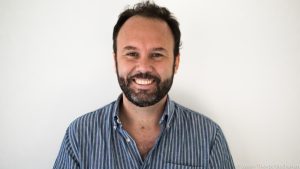 Tomàs Peire Serrate was born in Barcelona. He studied piano at the Sant Cugat del Vallès conservatory, where he grew up, and History at the Universitat Autònoma de Barcelona. After few years performing and teaching he decided to focus on composition, first studying at the Escola Superior de Música de Catalunya (Barcelona) with Salvador Brotons, and in 2009 at the Sibelius Academy of Helsinki (Finland) with Tapio Tuomela and Risto Väisänen. In 2011 he moved to New York with the La Caixa Fellowship to pursue a Master´s in Scoring for Film and Multimedia at the New York University, where he graduated in 2013 obtaining the Elmer Bernstein Award. That year he moved to Los Angeles to explore the film music industry and participate as a composer in different projects including writing the music for the films The Anushree Experiements and Prism, and orchestrating and arranging music for If I Stay, Minions or Love and Friendship.
Tomàs Peire Serrate was born in Barcelona. He studied piano at the Sant Cugat del Vallès conservatory, where he grew up, and History at the Universitat Autònoma de Barcelona. After few years performing and teaching he decided to focus on composition, first studying at the Escola Superior de Música de Catalunya (Barcelona) with Salvador Brotons, and in 2009 at the Sibelius Academy of Helsinki (Finland) with Tapio Tuomela and Risto Väisänen. In 2011 he moved to New York with the La Caixa Fellowship to pursue a Master´s in Scoring for Film and Multimedia at the New York University, where he graduated in 2013 obtaining the Elmer Bernstein Award. That year he moved to Los Angeles to explore the film music industry and participate as a composer in different projects including writing the music for the films The Anushree Experiements and Prism, and orchestrating and arranging music for If I Stay, Minions or Love and Friendship.
In the fall of 2015, Tomàs initiated his PhD studies at UCLA, where he is having the privilege to study with Bruce Broughton, Richard Danielpour, Ian Krouse, Mark Carlson, Peter Golub and David S. Lefkowitz. His research at UCLA is about music, space and media, with particular interest in new technologies and virtual reality. His concert works have been performed in Europe, US and Asia, and is currently working on a short opera-monologue that will be premiered at the Off-Liceu series in Barcelona next June 2018.
Photo courtesy Tomàs Peire Serrate.
Work to be Read: Rauxa
Rauxa is a sudden determination, like the impulse I had to write this piece, or an outburst, which actually is how this work begins. It is a Catalan word that has been used in pair with another one, Seny, meaning balance and sensibleness, to describe or refer to the Catalan people and their character. This duality, like in other cultures and traditions, is essential, indivisible, and necessary to understand each part separately, which is what I tried to explore here.
I worked on sketches and sections of Rauxa in different moments and places, always away from my home country, Catalonia, and I kept coming back to it looking to improve it as well as to learn more about myself and about music.
Tomàs’ Sound: Toccata (for piano, premiered by José Menor)
About Liliya Ugay
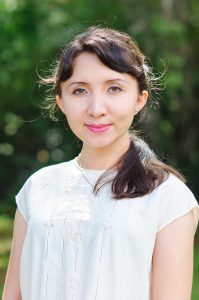 Described as “particularly evocative,” “fluid and theatrical… the music [that] makes its case with immediacy” (The Arts Fuse) as well as both “assertive and steely,” and “lovely, subtle writing” (Wall Street Journal) the music by the award-winning composer and pianist Liliya Ugay has been performed in many countries around the globe. Recipient of a 2016 Charles Ives Scholarship from the American Academy of Arts and Letters, and a 2017 Horatio Parker Memorial prize from the Yale School of Music, Ugay has collaborated with the Nashville Symphony, Albany Symphony, New England Philharmonic, Yale Philharmonia, Raleigh Civic Symphony, Aspen Contemporary Ensemble, Molinari Quartet, Antico Moderno, Omnibus ensemble, and Paul Neubauer among others. Her music has been featured at the Aspen, American Composers, New York Electroacoustic Music, June in Buffalo, and Darmstadt New Music festivals, as well as the 52nd Venice Biennale. During 2017-2018 Ugay will be working on a new opera as a Resident Composer at the American Lyric Theater. Originally from Uzbekistan, Liliya is currently a Doctor of Musical Arts candidate at the Yale School of Music studying with Aaron Kernis and David Lang. Besides new music, Liliya is passionate about the music of the repressed composers from the Soviet era. She regularly presents a series of the lecture-recitals on this topic with guidance of Boris Berman.
Described as “particularly evocative,” “fluid and theatrical… the music [that] makes its case with immediacy” (The Arts Fuse) as well as both “assertive and steely,” and “lovely, subtle writing” (Wall Street Journal) the music by the award-winning composer and pianist Liliya Ugay has been performed in many countries around the globe. Recipient of a 2016 Charles Ives Scholarship from the American Academy of Arts and Letters, and a 2017 Horatio Parker Memorial prize from the Yale School of Music, Ugay has collaborated with the Nashville Symphony, Albany Symphony, New England Philharmonic, Yale Philharmonia, Raleigh Civic Symphony, Aspen Contemporary Ensemble, Molinari Quartet, Antico Moderno, Omnibus ensemble, and Paul Neubauer among others. Her music has been featured at the Aspen, American Composers, New York Electroacoustic Music, June in Buffalo, and Darmstadt New Music festivals, as well as the 52nd Venice Biennale. During 2017-2018 Ugay will be working on a new opera as a Resident Composer at the American Lyric Theater. Originally from Uzbekistan, Liliya is currently a Doctor of Musical Arts candidate at the Yale School of Music studying with Aaron Kernis and David Lang. Besides new music, Liliya is passionate about the music of the repressed composers from the Soviet era. She regularly presents a series of the lecture-recitals on this topic with guidance of Boris Berman.Photo by Dilya Khaliulina.
Work to be Read: Rhapsody in Color
I chose the title Rhapsody in Color to evoke two musical associations: Liszt’s Hungarian Rhapsodies and Gershwin’s Rhapsody in Blue. The piece bears a structure similar to Hungarian Rhapsodies with two main sections – slower one (lassan) and fast one (friska). Each section bears strong elements of improvisation: in particular, such aspects as a simple harmonic progression in variations and ostinato.
The idea of Rhapsody in Color is similar to the process of reproduction of old sepia photographs or films into color with individual, unrealistic to the time of the original, touch. Rather a simple, and, in a sense, traditional, motive and harmonic progression are taken through the contemporary lens by coloring it out with the sporadic and often unpredictable formal and orchestral realization. Similarly, in the second half of the piece, the idea of the ostinato dance is approached from modern perspective, transforming it into what sounds more like an electronic dance loop track with constantly adding/changing shades and timbral colors.
Liliya’s Sound: Sospiri (conductor is Peter Askim, and the orchestra is The Next Festival of Emerging Artists)
Featured photo: Jiayi Liang Photography


